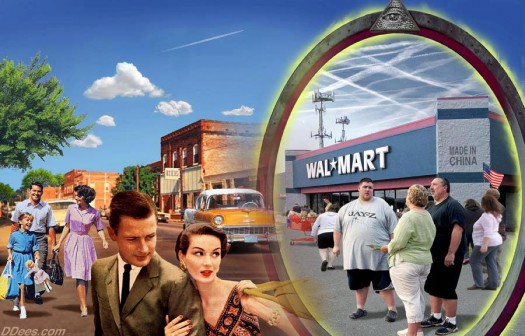A Placemaking Journal
Placemaking Gets Freaky
I’m a freak magnet.
For reasons unknown, the more, err, colorful characters of the public realm seem to find my personal space especially attractive.
If I go to a midday matinée and another patron — let’s say an agitated mumbler in a trench coat with shoes crudely fashioned out of car wash sponges — joins me in an otherwise empty theater, that person will sit in the seat directly behind mine. Which he’ll then begin kicking.
On downtown sidewalks, I become a lightning rod for shady purveyors of tattered briefcases and broken Zune players plucked from dumpsters. And on public transportation, I’m apparently the premier audience for wild-eyed, wiry-haired old women and their worries that robots are stealing their luggage.
This can be amusing. It can be unsettling. But most of the time it’s just another reminder of how much our perceived quality of life, in the agora of our modern existence, is influenced by the presence and behaviors of other people. And I’m not alone in noticing.
Even if you don’t possess an intrinsic magnetic attraction for odd curiosities, you’ve surely had more than a few uncomfortable run-ins along the lines of BuzzFeed’s “26 Things You’ll See on Public Transportation.”
Without question, it’s not always pretty out there.
My thinking along these lines was rekindled recently when Truth Be Known posted an amusing photo juxtaposing a 50s-era Main Street with a modern Walmart. Given my interest in community and urban form, I was immediately drawn to the contrasts: the contribution of private buildings to public space vs. the warehouse in a parking lot; the attention to personal appearance and style vs. the slovenly, Kunstlerian cartoonsphere; the orderly street trees given way to cell towers; and the proud American products now replaced by Chinese imports.
It all seemed so ideal. Some distant time and place where aggressive panhandling, urban taggers, and drunken tourists simply didn’t exist.
But then, with the help of the diverse comment stream accompanying the photo, I snapped out of it. And that’s because I was reminded that the sense of comfort and safety that existed (or seemed to exist) in the mid 20th century was achieved not through some profound sense of social harmony, decorum and mutual respect but through policies and behaviors that routinely deprived entire classes of people their rights to free assembly and speech.
That is, for all the picture’s appealing, 50s-era physical qualities, it’s a charade. Like David Lynch’s “Blue Velvet,” it’s a picture-perfect illusion masking disturbing dysfunctions and inequities that don’t just go away with heavy-handed policies pushing them beneath the surface.
Yes, people reasonably appreciate some sense of predictability — the feeling of being safe in public, for instance — but, in terms of our public realm, the nation’s growing inventory of dead and dying malls offers pretty compelling evidence that such predictability alone is insufficient to hold our interest indefinitely. Perhaps we’re a bit more willing than we thought to accept a little less predictability in exchange for the possibility of the unique, the delightful, or the unexpected.
After all, creative class revitalization, urban agriculture, tactical urbanism interventions, and public art initiatives — all of which are feeding the increasing rebirth of our cities and towns — are rooted in creative expression and the free sharing of new ideas. Things that simply don’t happen in environments of excessive control — social or otherwise.
The cool, the fun, the innovative, and the entrepreneurial may all, in the natural course of their evolution, end up in the mainstream. But they rarely start there. So let your freak flag fly. And if your pursuits — or baffling eccentricities — bring you uncomfortably close to my personal space, well, so be it.
It’s a small price to pay for all the wonders of human possibility.
–Scott Doyon
If PlaceShakers is our soapbox, our Facebook page is where we step down, grab a drink and enjoy a little conversation. Looking for a heads-up on the latest community-building news and perspective from around the web? Click through and “Like” us and we’ll keep you in the loop.










